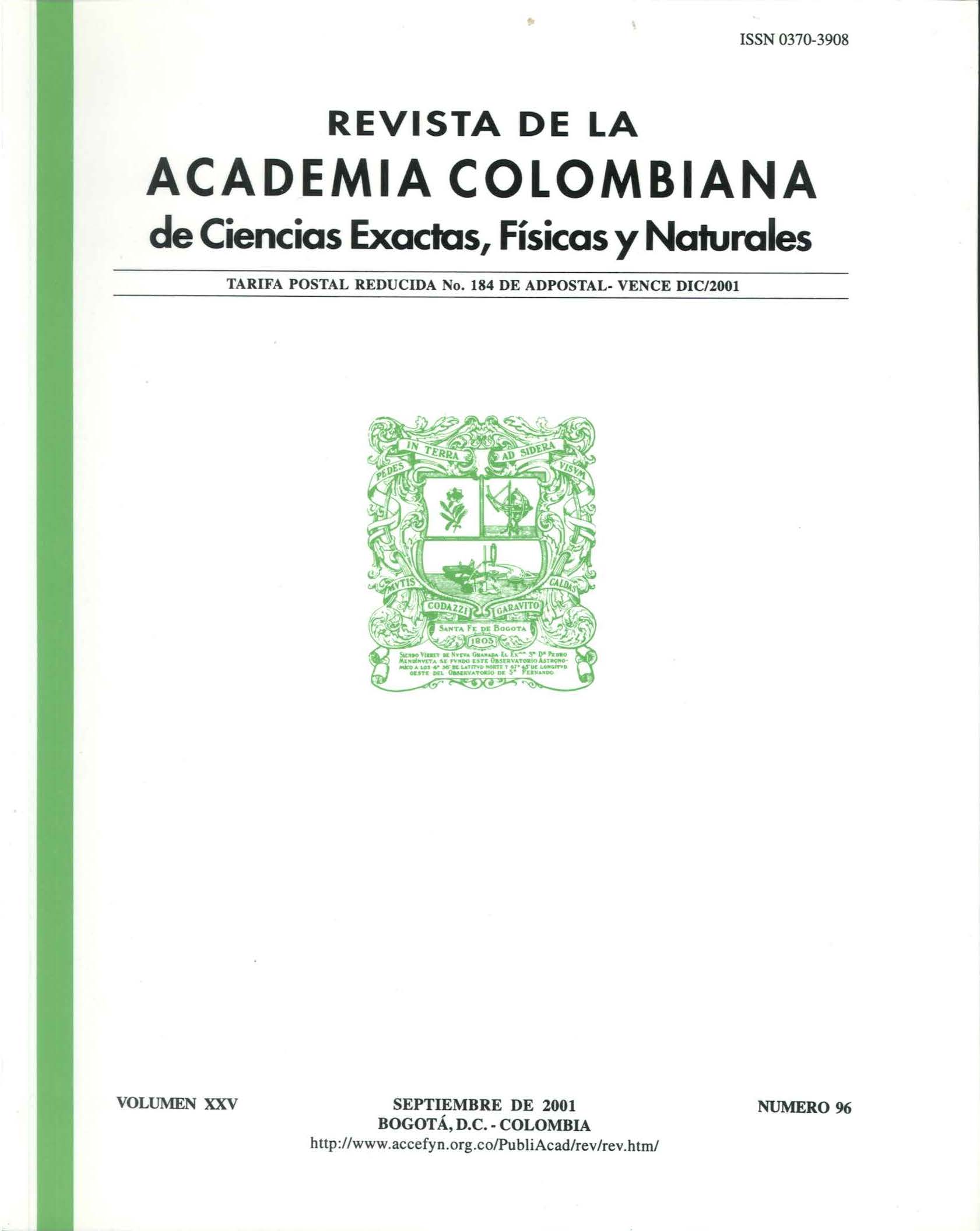Resumen
En los alrededores de Leticia, Sphaenorhynchus carneus, S. dorisae y S. lacteus coexisten en pantanos de bosque, tanto en tierra firme como en várzea, y forman parte de comunidades complejas compuestas por cerca de diez especies. Sus larvas son nectónicas y se encuentran asociadas a vegetación flotante; se caracterizan por poseer grandes papilas dispuestas en varias hileras (a excepción de S. dorisae) y un tubo anal medial, además de una llamativa coloración verde con tonos rojizos en vida. Sphaenorhynchus dorisae presenta una estructura bucal externamente similar al llamado "brazo labial" de Scarthyla goinorum o de los Scinax del grupo rostrata. Sphaenorhynchus carneus posee una hilera anterior de dentículos, a diferencia de las otras especies que poseen dos. Se proporcionan datos novedosos sobre la biología de estas especies.
Referencias
Alüg, R. & R. W. McDiamúd. 1999. Diversity, familial and generic characterizations, pp. 295-337. En McDiarmid, R. W. & R. Altig (eds.) Tadpoles: The Biology of Anuran Larvae. University of Chicago Press, Chicago, IL.
AIIIR, IL, R. W. McDJarmid. IC. A. Niclol, & P. A. Utacb. 1998. A key to the anuran tadpoles of the United States and Canada. Contemporary Herpetology Information Series 2: 1-53.
Ardilla-Robayo, M. C. & P. M. Rivera-Correa. 1997. Herpetología (Anfibios/Reptiles), pp. 255-164. En Zonificación Ambiental para el Plan Modelo Colombo-Brasilero (Eje Apaporis-Tabatinga: PAT). Instituto Geográfico Agustín Codazzi, Bogotá.
Crump, M. 1974. Reproductive strategies in a tropical anuran community. University of Kansas, Museum of Natural History, Miscellaneous Publication 61: 1-68.
Duellman, W. E. 1978. The biology of an equatorial herpetofauna in Amazonian Ecuador. Museum of Natural History, University of Kansas, Miscellaneous Publication 65: 1-351.
Duellman, W. E. & M. L. Crump. 1974. Speciation in frogs of the Hyla palmeri group in the upper Amazon Basin. Occasional Papers, Museum of Natural History, University of Kansas 23: 1-40.
Duellman, W. E. & H. O. De Sá. 1988. A new genus and species of South American bufonid frog with a highly modified tadpole. Tropical Zoology 1: 117-136.
Duellman, W. E. & J. R. Mendelson III. 1995. Amphibians and reptiles from northern Departamento Loreto, Peru: taxonomy and biogeography. University of Kansas Science Bulletin 55: 329-376.
Gosner, K. L. 1960. A simplified table for staging anuran embryos and larvae with notes on identification. Herpetologica 16: 183-190.
Hero, J. M. 1990. An illustrated key to tadpoles occurring in the Central Amazon rainforest, Manaus, Amazonas, Brazil. Amazoniana 11: 201-262.
Hödl, W. 1977. Call differences and calling site segregation in anuran species from Central Amazonian floating meadows. Oecologia 28: 351-363.
Rodríguez, L. O. & W. E. Duellman. 1994. Guide to the frogs of the Iquitos Region, Amazonian Peru. University of Kansas, Natural History Museum, Special Publication 12: 1-80, pls. 1-12.

Esta obra está bajo una licencia internacional Creative Commons Atribución-NoComercial-SinDerivadas 4.0.

